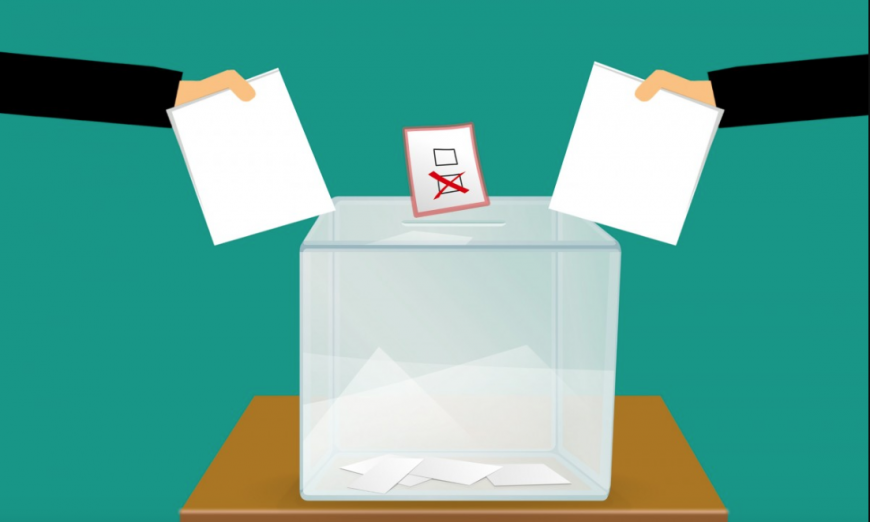Updated June 15 – The Santa Clara County Registrar of Voters still needs to certify the election, but it looks like Santa Clara’s Measure D has passed.
According to elections officials, nearly 79% of people in Santa Clara voted for the City Charter amendment.
Measure D will officially change the City Charter so that the City is divided into six districts with one council member elected to represent each district. Santa Clara’s mayor will still be elected at-large, meaning by the entire City.
Measure D will also establish a 30-day residency requirement for all elected officials.
While voters approved the measure by a wide majority, it will not change the way things are done in Santa Clara. The City has operated in the six district format since November 2018 after a Santa Clara County judge ruled against Santa Clara in a California Voting Rights Act (CVRA) lawsuit and ordered the City to adopt a district-based election system.
Measure D simply changes the City Charter to reflect what is already being done in the City.
Council members representing District 2 and District 3, as well as the mayor’s seat will be up for election this November.
FUHSD Measure G
The Fremont Union High School District (FUHSD) passed its bond measure by a thin margin. 55.49% of voters voted in favor or Measure G, which needed a super majority (55% of the vote) to pass.
Measure G is a $275 million school bond that will allow the district to “continue the renovation and modernization of all district high schools, providing all students and teachers with modern, functional classrooms and facilities.”
The bond means homeowners will see a property tax increase of approximately $15 per $100,000 of assessed value of their property.
Measure G will help complete the work started by Measure CC, which was passed in 2018. FUHSD says many of its schools were built between 50 and 100 years ago, so these upgrades are necessary.
Supervisor Ellenberg Re-Elected
Santa Clara County Supervisor Susan Ellenberg handily won her re-election bid to represent District 4.
Ellenberg ran unopposed but still received more than 51,000 votes.
Other Primary Results
This marked the first time that Santa Clara and Sunnyvale voters took part in electing a representative for Assembly District 26. We Draw the Lines created the new district based on the results of the 2020 Census.
Democrat Evan Low won a majority of the votes in the primary with 66.90%. Republican Tim Gorsulowsky came in second with 23.73%.
State Senator Bob Wieckowski has termed out leaving the election for the 10th State Senate seat wide open. Democrat Lily Mei won the primary with 32.58% of the vote. Democrat Aisha Wahab came in second with 26.83%.
Meanwhile, incumbent Rep. Ro Khanna claimed a majority of the votes in the District 17 Congressional primary election. Khanna received 66.37%. Republican Ritesh Tandon came in second with 25.04% of the vote.
Registrar of Voters Still Counting
- Ensure that every eligible ballot is counted;
- Ensure that voters only voted once;
- Ensure proper procedures were followed on Election Day;
- And Ensure the vote tabulation system is properly counting ballots.
The Registrar of Voters says processing Vote by Mail ballots takes quite a bit of time. Several steps occur, such as signature verification and preparing them for counting, along with strict chain of custody and ballot accounting procedures. Recent legislation allows for Vote by Mail ballots to be postmarked on or before Election Day and received within seven days of the election. All of this preparation and process takes time.
During the course of the canvass, voters are given credit (voting history) for having voted by mail or in person. As voters are given voting credit, the number of voters is reconciled to the number of ballots cast for each voting location. This is a critical step in ensuring that all ballots are accounted for from each voting location.
In the rare instance that indicates a voter may have voted twice, it is investigated. In cases that truly indicate a voter may have tried to vote twice and with intent to defraud, they are reported to the local District Attorney’s office and the Secretary of State Fraud Division for investigation and possible prosecution.
During the canvass, counties are required to perform audits of the ballot counting system, by performing a One Percent Manual Tally. This involves randomly selecting one percent of the precincts of ballots cast in person, as well as Vote by Mail ballots, then performing a manual hand count of each set of ballots and comparing them to the machine count results.
“The official canvass is a long-standing, multi-step, and continually evaluated process that elections offices use to ensure all eligible ballots have been received and processed, that there is one vote per voter, and that all votes have been counted correctly,” said John Tuteur, Napa County Registrar of Voters.
As with all activities related to an election, the canvass activities are open to the public for observation. Please contact your county elections office for more details on how to observe election activities. Information on this topic as well as direct links to local elections offices can be found on the Bay Area Votes website, or our Facebook page, Bay Area Votes.
A more detailed article and Fact Sheet on the June 2022 Primary Canvass can be found on our coalition webpage under “Just the Facts”.






